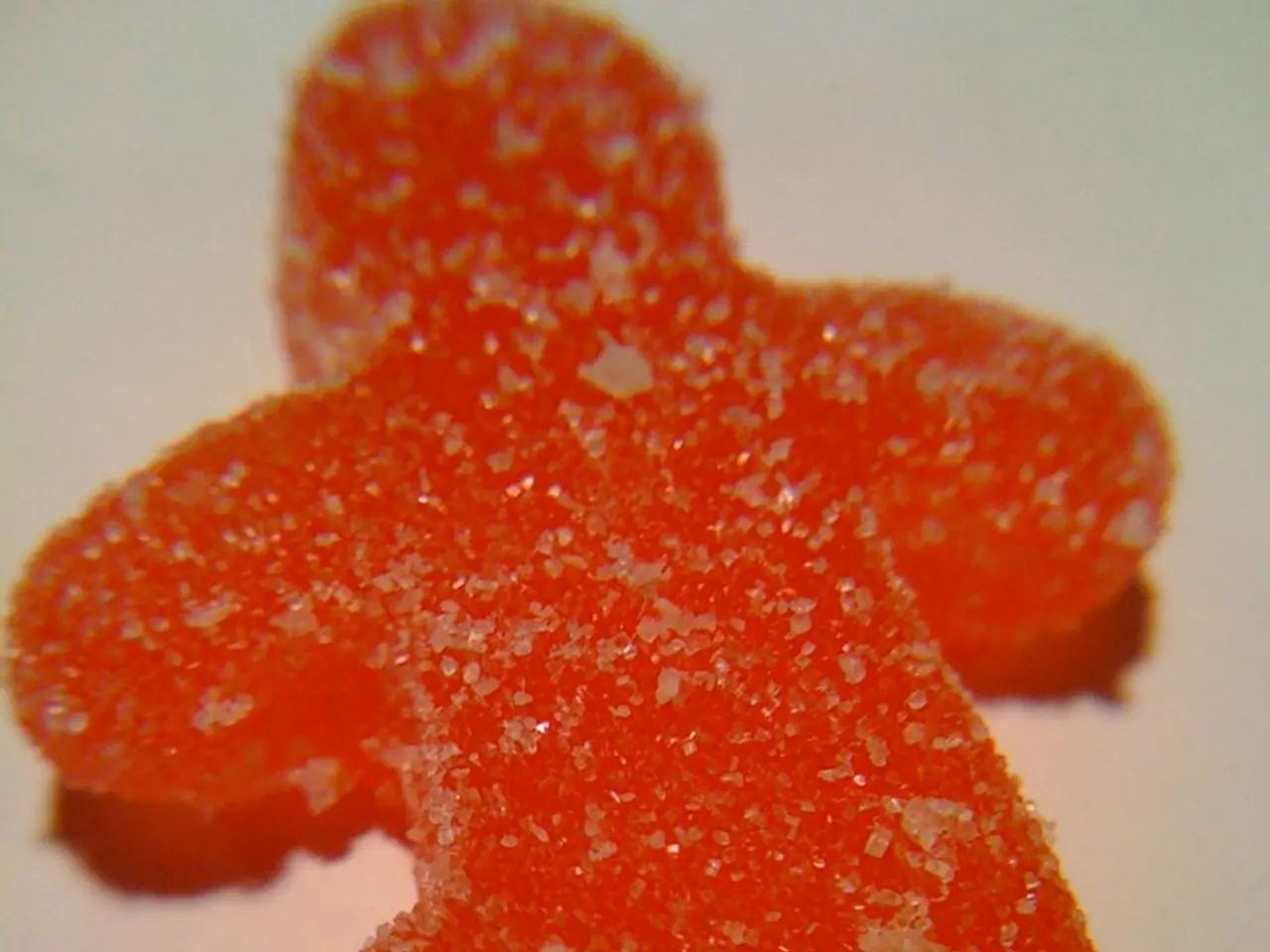Diabetic Individual Successfully Generates Own Insulin through Altered Cells, Eliminating the Need for Transplant Medications
In a groundbreaking development, scientists in Sweden and the United States have successfully avoided the need for immunosuppressant therapy in type 1 diabetes transplants by using gene-edited pancreatic islet cells engineered to be "hypoimmune." These cells are designed to evade immune system detection and attack [1][2][3].
The researchers made three specific edits in the donated cells to quiet immune system responses. The first edit depletes the cells' supply of HLA class I antigens, while the second edit depletes the cells' supply of HLA class II antigens. The third edit causes the donated cells to make more of the protein CD47 [1].
These hypoimmune cells lack markers that provoke adaptive and innate immune responses, making them effectively "invisible" to the host immune system [1]. In a human trial, these cells survived and continued producing insulin for at least 12 weeks without systemic immunosuppressive drugs [1][2].
Functional assays showed stable C-peptide levels (a marker of insulin production) and improved glycemic control, with no inflammation detected around the grafts via imaging [1]. This proof-of-concept suggests that gene editing can provide a curative beta-cell replacement therapy that circumvents daily insulin therapy and the risks of immunosuppression [1][3].
The new case study involves a 42-year-old man with type 1 diabetes. The man received a transplant of gene-edited pancreatic cells. The researchers injected the modified cells into the man's forearm [1]. The surviving cells produced insulin as normal, and the man appeared to be doing well 12 weeks later [1].
While effective, immunosuppressant drugs have well-known drawbacks, such as weakening people's immunity to actual threats like infections. Some of the cells were not fully edited, and the man's immune system quickly killed them off [1]. However, the majority of the edited cells survived and functioned as intended.
The study, published this week in the New England Journal of Medicine, suggests that immune evasion could be an alternative concept for the circumvention of allorejection [1]. Other research teams have shown early success in using similar transplants to cure type 1 diabetes, also avoiding the need for immunosuppressant therapy [1].
This breakthrough could revolutionize the treatment of type 1 diabetes, offering patients a potential cure without the need for lifelong immunosuppressive therapy and its associated risks. Further research is needed to confirm the long-term effectiveness and safety of this gene-editing approach.
[1] Study researchers tested their unique approach to bypass immunosuppressant therapy on a human subject for the first time. [2] The transplant was conducted by scientists in Sweden and the U.S. [3] Early clinical trials of the technology have looked promising so far. [4] The man's body left the fully edited cells alone, even without immunosuppressants. [5] The third edit causes the donated cells to make more of the protein CD47. [6] The first edit depletes the cells' supply of HLA class I antigens. [7] The second edit depletes the cells' supply of HLA class II antigens. [8] The transplants still require lifelong immunosuppressive therapy to ensure the host's body doesn't go after the donated cells. [9] The study suggests that immune evasion could be an alternative concept for the circumvention of allorejection. [10] Other research teams have shown early success in using similar transplants to cure type 1 diabetes, also avoiding the need for immunosuppressant therapy. [11] The researchers made three specific edits in the donated cells to quiet immune system responses. [12] The man received a transplant of gene-edited pancreatic cells. [13] The researchers published their findings this week in the New England Journal of Medicine. [14] The surviving cells produced insulin as normal, and the man appeared to be doing well 12 weeks later. [15] The researchers injected the modified cells into the man's forearm. [16] Effective as these drugs are, they have well-known drawbacks, such as weakening people's immunity to actual threats like infections. [17] Some of the cells were not fully edited, and the man's immune system quickly killed them off. [18] The new case study involves a 42-year-old man with type 1 diabetes.
- This gene-editing technology, developed by scientists, could potentially alleviate chronic diseases like type-2 diabetes, cancer, and respiratory conditions, by providing a curative solution.
- In the realm of health and wellness, this breakthrough may enhance workplace wellness and productivity by reducing the effects of medical conditions.
- This technology's success in type 1 diabetes transplants could pave the way for advancements in digestive health, eye health, hearing, and skin care.
- As an innovative application of science and technology, this development could also impact mental health, particularly in managing stress related to medical conditions.
- For men specifically, this advancement in type 1 diabetes treatment could improve mens' health and overall quality of life.
- The study's findings could have implications for women's health, potentially offering a solution for managing conditions like type 2 diabetes, cancer, or menopausal symptoms.
- Genetic methods like this could play a significant role in managing autoimmune disorders, which affect millions globally.
- With climate change posing serious threats to public health, advancements in medical treatments and therapies could help mitigate the effects of chronic diseases exacerbated by environmental conditions.
- This new approach in gene-editing could also revolutionize the manufacturing industry, as it applies to pharmaceuticals and medical device production.
- In addition to physical health, the implications of this gene-editing technology could also extend to mental health, mindfulness, and stress management.
- As the study sheds light on effective gene-editing techniques, it could spur investment and interest from venture capitalists and the finance sector, propelling the growth of the health and wellness industry.




